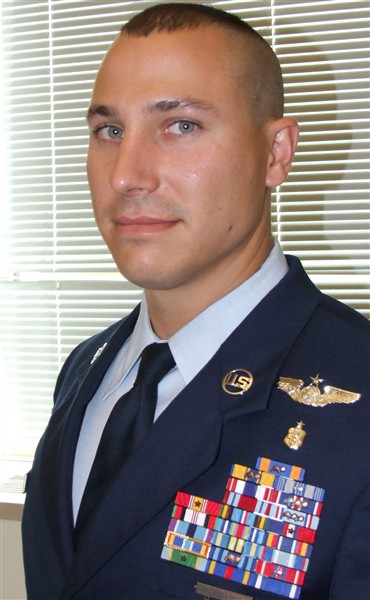Why We Serve: Tech Sgt. Mark A. DeCorte, USAF
October 19th, 2007 by xformed
Snooping around the web drummed up this: What a combat medic figured out:

Why We Serve: Combat Medic Saves Lives Using New Evacuation System
By Gerry J. Gilmore
American Forces Press ServiceWASHINGTON, Oct. 12, 2007 – A veteran Air Force combat medic helped to transform the way wounded troops are treated and evacuated during a recent deployment to Afghanistan.
Air Force Tech. Sgt. Mark A. DeCorte is participating in the Defense Department’s “Why We Serve†public-outreach program. Tech Sgt. Mark A. DeCorte recalled the previous practice when unarmed battlefield medics were flown in to treat and evacuate injured servicemembers usually after an area had been cleared of the enemy.
However, DeCorte emphasized, “When you have a wounded soldier on the ground, they need help now.â€
[…]
He took a little lead from previous wars and todays technology, to bring more detailed lifesaving techniques closer to the wounded…in fact, right on the field of combat, and on the way to the first hospital.
[…]
The concept of treating and evacuating injured servicemembers during the din of battle was tested during DeCorte’s tour of duty in Afghanistan from February to June 2006, the 13-year military veteran said.The Army had requested Air Force assistance to improve its air-ambulance capabilities in Afghanistan’s austere, mountainous terrain, DeCorte explained.
Previous doctrine was to send in medical-evacuation helicopters after the fighting had stopped, he noted, but this practice meant that some troops wouldn’t survive the trip to the hospital. That procedure would change.
In Afghanistan, DeCorte was one of several military medics embedded with aerial combat-support units. Instead of using traditional rotary- or fixed-wing aircraft marked with red crosses, the new wave combat medics carried arms as they flew directly into the maelstrom aboard armored helicopter gunships.
The idea, DeCorte explained, was to treat the wounded as quickly as possible. And, when the concept was tested on the battlefield, it contributed to achieving a previously unimagined wounded-survivability rate of 90 percent, he said.
“We can now go in embedded (with combat units) and part of the operation,†DeCorte said.
[…]
Riding to the rescue in HH-60G armed Pave Hawks:
[…]
A servicemember’s odds of surviving battlefield-inflicted wounds go way up if he or she can be evacuated to a treatment center within an hour of being injured, DeCorte pointed out. In medical parlance that period of time is known as “the golden hour,†he said.“If I can get you to surgery within an hour you most likely have a chance to survive,†DeCorte said.
The Minot, N.D.-born noncommissioned officer saved 36 lives during his 63 combat sorties in southern Afghanistan. “It’s very bad in that area,†DeCorte observed, adding that two of his fellow combat medics on other air-evacuation flights saved another 102 lives between them.
[…]
BZ, Tech Sgt Decorte!
This entry was posted on Friday, October 19th, 2007 at 12:01 am and is filed under Air Force, History, Jointness, Military, Military History. You can follow any responses to this entry through the RSS 2.0 feed. Both comments and pings are currently closed.